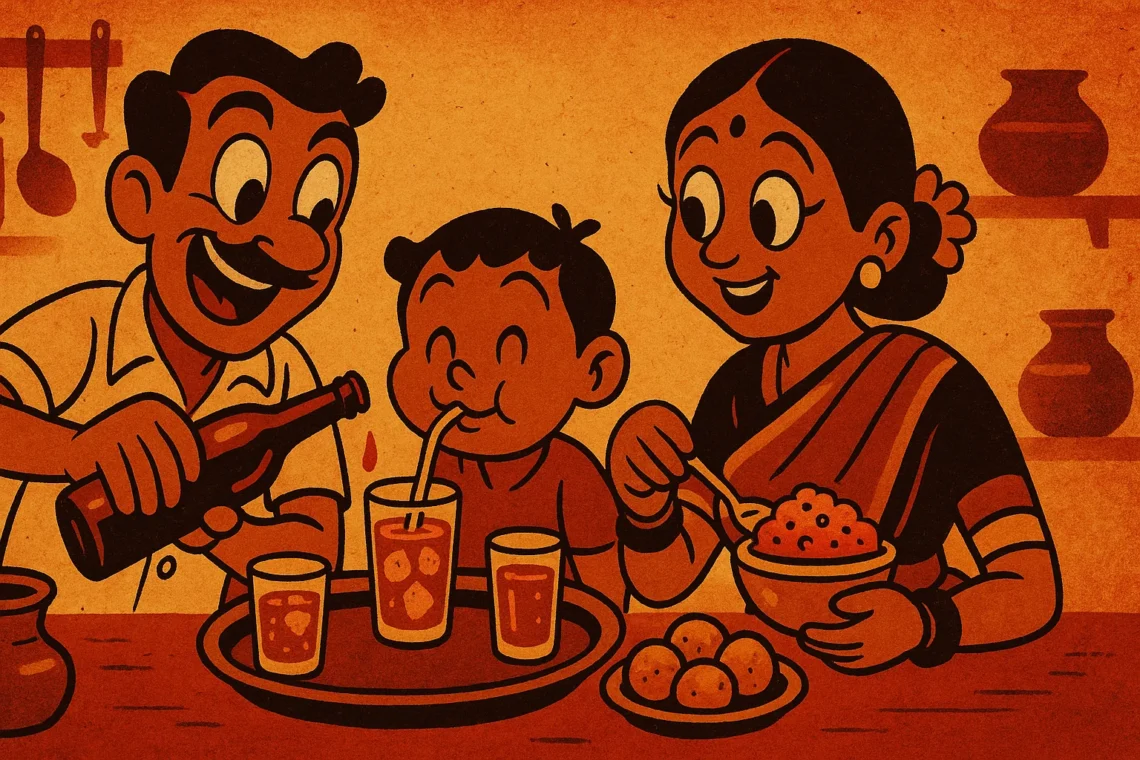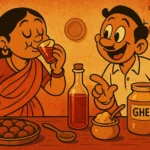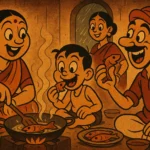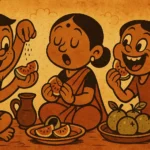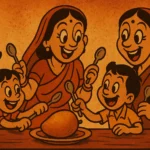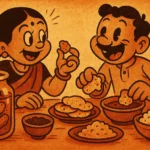There are summers you remember for mangoes, some for monsoon weddings, and a few—rare ones—for heartbreak. But the summer I remember most vividly had none of those. It had rose syrup. Thick, sticky, unapologetically pink. That syrup was the star of every afternoon, a liquid thread running through all the sweat, boredom, and chatter that came with school holidays in a hot Indian home.
It sat in the fridge like royalty, always in that same tall bottle with a twist-off cap that needed adult strength to open. No one knew who bought it or when it first appeared. It just… was. Like a deity of refreshment, quietly judging the Rasna packets and tetra packs beside it. No label. Just that translucent crimson glow, always catching the sunlight through the glass shelf.
The Ritual of the Rose
Making a glass of rose syrup wasn’t just pouring a drink—it was choreography. You started with a steel tumbler, always. Never glass. Then came the chilled water—no ice, just the kind that had flirted with freezing but stayed loyal to fluid. Then, carefully, two spoonfuls of rose syrup. Stir gently. Watch it swirl like a magic spell. If you were feeling bold, maybe a dash of milk. Or for real flair, a scoop of vanilla ice cream and call it falooda even if it lacked the noodles. We were kids. Branding was flexible.
The first sip always shocked the system. The sweetness clung to your teeth. The floral note hit the back of your throat with something between perfume and nostalgia. And then, the cool spread—like a wet cloth on the back of your neck in May heat. You exhaled and everything felt a little more manageable. Your skin still stuck to plastic chairs, but your soul had a cold drink. That counted for something.
Rose Syrup Economics
The bottle lasted all summer. Partly because it was dense enough to coat a wall, and partly because it was guarded with suspicion. “Don’t finish it in one go!” was the standing instruction from someone in the kitchen. You learned to ration it. To measure your joy. To know that just because you could pour a third spoonful didn’t mean you should. It was a masterclass in restraint taught by a pink drink.
Guests got rose syrup too, but only the “good” ones. If the cousins from Pune came, out it came with extra ice and fanfare. If it was just the neighborhood aunty popping in? Plain water. Maybe a lemon if she looked overheated. You knew where everyone stood by the beverage they were offered. And rose syrup? That was top-tier hospitality. The kind that said, “You’re family, but also—this is a treat, okay?”
Beyond the Bottle
I never thought much about it then. It was just what we drank. But years later, in an apartment in Austin, I found myself staring at a bottle of rose syrup in the “international foods” aisle. It was overpriced, the label overly ornate, and the color not quite right—but I bought it anyway. At home, I poured myself a tumbler, stirred it like muscle memory, and took a sip. For a second, it worked. The ceiling fan in my kitchen hummed like the one back home. The sun hit the floor just the same. I could hear the cousins shouting over carrom in the next room, feel the stickiness of summer skin, and smell the faint whiff of wet earth outside the window.
It’s funny how something as small as a syrup can hold a whole season. A whole feeling. Maybe that’s why we drink it slowly. Not just to savor the sweetness, but to preserve the time it represents.
Still in the Fridge
Back in Mumbai, my mother still keeps a bottle of rose syrup in the fridge. It sits between the dhokla and the old ceramic pickle jar, quietly existing. No one drinks it daily anymore. We’ve all graduated to lemon mint coolers and coffee on ice. But every summer, at least once, someone opens that bottle, pours a little into a tumbler, and the whole house tilts slightly into the past.
Because that’s what rose syrup was. A pause. A pink, perfumed breather in the middle of a sweltering, chaotic season. A taste that told you summer would be long—but you’d survive it, one sweet sip at a time.
Born in Mumbai, now stir-frying feelings in Texas. Writes about food, memory, and the messy magic in between — mostly to stay hungry, sometimes just to stay sane.

